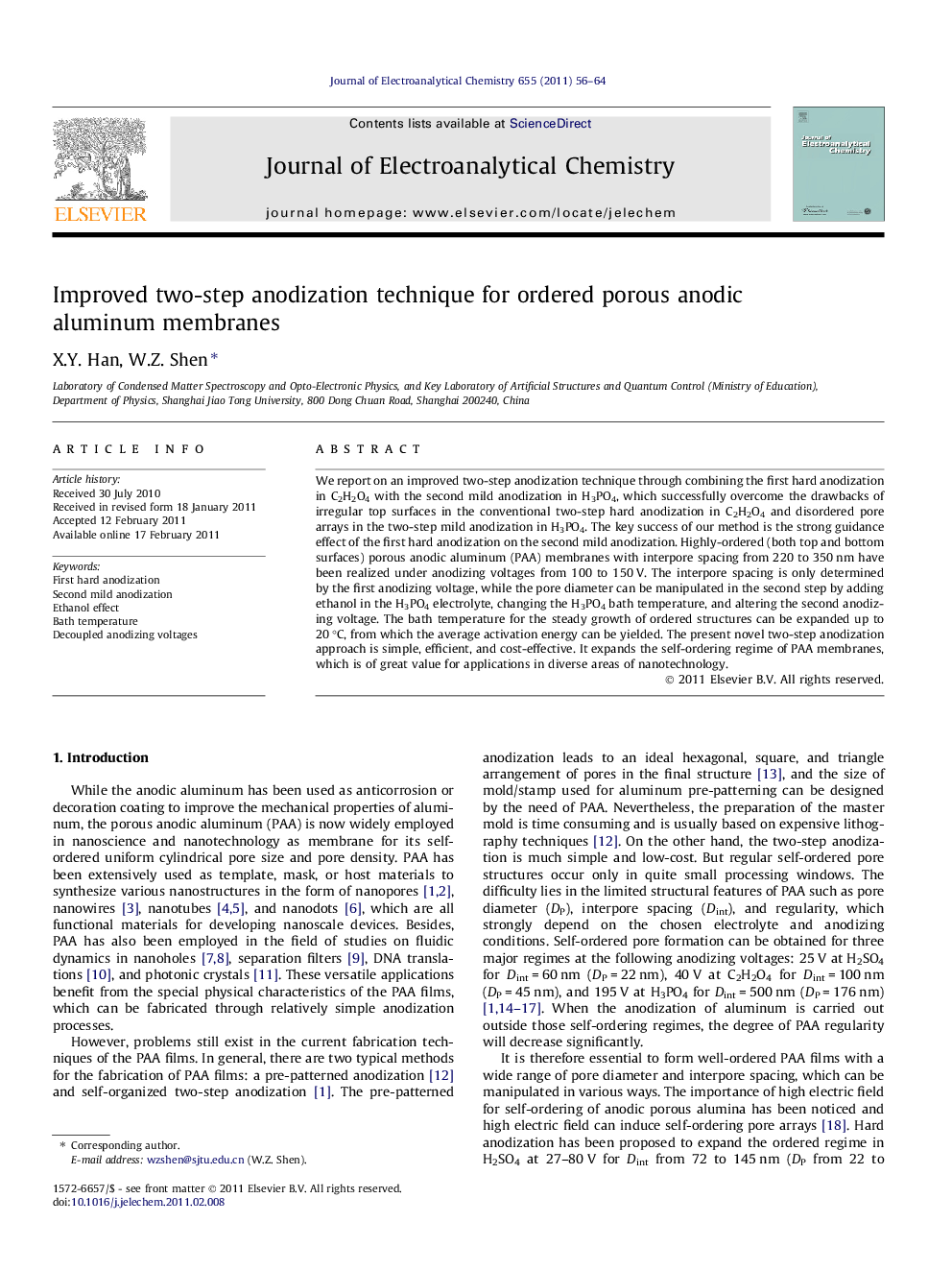| Article ID | Journal | Published Year | Pages | File Type |
|---|---|---|---|---|
| 219676 | Journal of Electroanalytical Chemistry | 2011 | 9 Pages |
We report on an improved two-step anodization technique through combining the first hard anodization in C2H2O4 with the second mild anodization in H3PO4, which successfully overcome the drawbacks of irregular top surfaces in the conventional two-step hard anodization in C2H2O4 and disordered pore arrays in the two-step mild anodization in H3PO4. The key success of our method is the strong guidance effect of the first hard anodization on the second mild anodization. Highly-ordered (both top and bottom surfaces) porous anodic aluminum (PAA) membranes with interpore spacing from 220 to 350 nm have been realized under anodizing voltages from 100 to 150 V. The interpore spacing is only determined by the first anodizing voltage, while the pore diameter can be manipulated in the second step by adding ethanol in the H3PO4 electrolyte, changing the H3PO4 bath temperature, and altering the second anodizing voltage. The bath temperature for the steady growth of ordered structures can be expanded up to 20 °C, from which the average activation energy can be yielded. The present novel two-step anodization approach is simple, efficient, and cost-effective. It expands the self-ordering regime of PAA membranes, which is of great value for applications in diverse areas of nanotechnology.
► Ordered PAA membranes (Dint from 220 to 350 nm) have been fabricated. ► Dint depends linearly only on the first anodizing voltage (U1). ► Activation energy (Ea) is yielded from the growth rate versus temperature. ► Addition of ethanol decreases growth rate and pore opening. ► Decoupled second voltage influences pore opening with constant Dint.
